In order to convert
digital values (n-bit vectors etc) to the equivalent analogue
value (for instance 0 to 5 volt) can it be necessary connect
hardware DAC to the system. Those usually based on a 2R-ladder
network and will be quite expensive when a higher resolution
needed (12-bit or more).
A cheaper alternative
could a Pulse Modulation based DAC - like the PWM and
Sigma-Delta types.
Lots of documentation can
be found on the net - concerning the theories behind and the
frequency spectres etc. The exercises below mostly about the
VHDL implementations of a PWM and a PPM Sigma-Delta conversion.
|
| |
|
|
|
| |
You may adjust the Clk-frequency
between 25, 50 and 100 MHz in order to observe the PWM
and PPM outputs.
SW6..SW0 = the 7- bit PCM value for the PWM and PPM
duty cycles.
SW7
= Selection between High and Low Clk frequency -
Calculate the exact number yourself
LD3
= The PWM output
LD4
= The PPM output |
| |
|
| |
|
|
|
|
The PWM generator basically a Counter and a Comparator.
If the Max counter value a power of 2 minus 1(like 127, 255 etc)
will this circuit normally work alright.
If the Max counter value below will there be a chance
(read - risk) of mal-functionality due to the fact that not all bit changes
simultaneously - Consider an extra register between the counter and the
comparator.
|
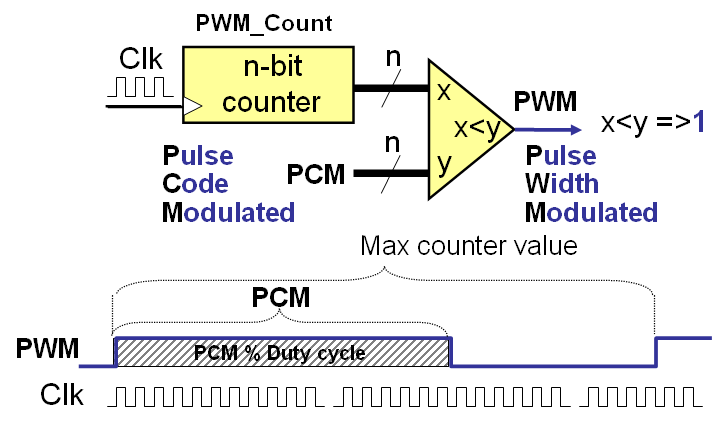 |
|
|
|
The PPM signal will have a
"more equal" contribution compared with the similar
PWM solution.Hence
will the requirements for filtering be less compared
with the similar PWM solution.
In case of power output
will the power-lost be equal to the number of
switches (on/off and off/on)
|
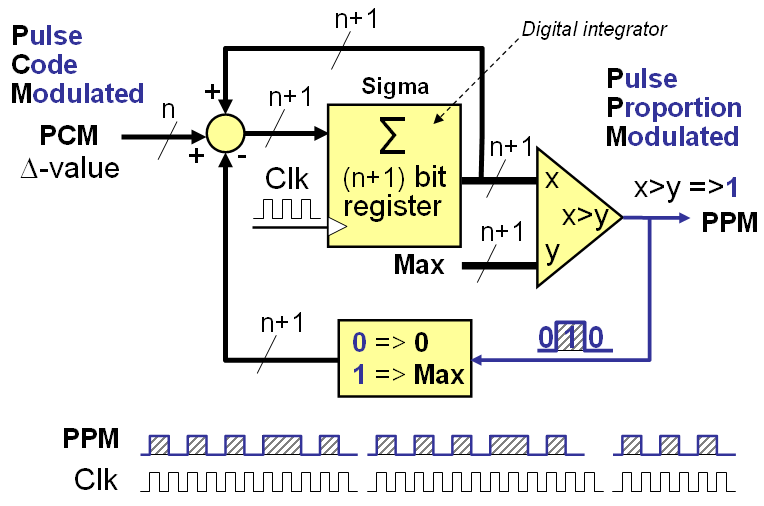 |
|
|
|
| |
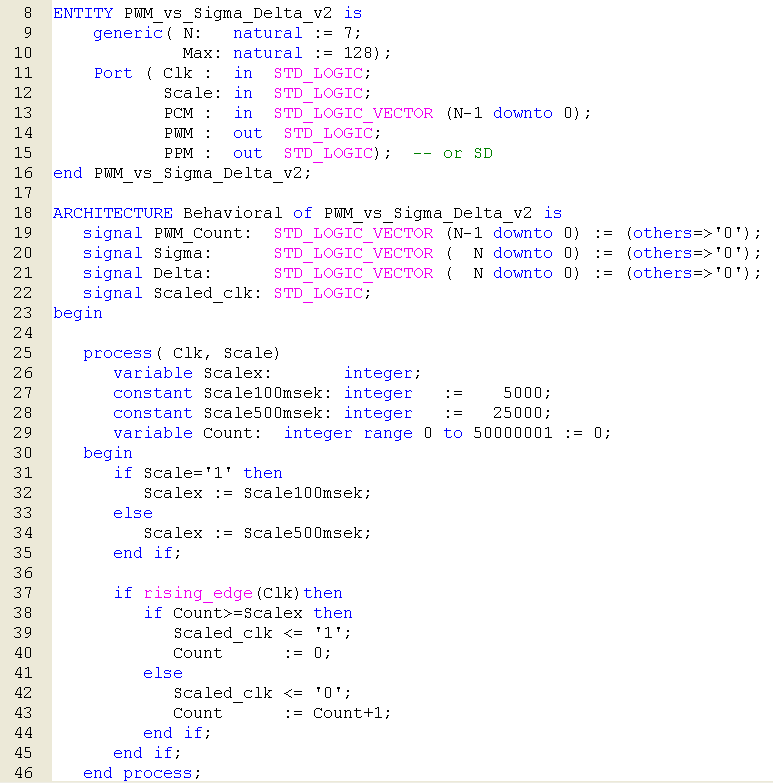 |
Please note!
In order to avoid clock-skew are all F/F's driven by
the same Clk-signal.The
Scaled_Clk will only be high for one Clk-period and
hence can it serve as CE (Clock Enable) signal in
the processes for PWM and PPM generation.
|
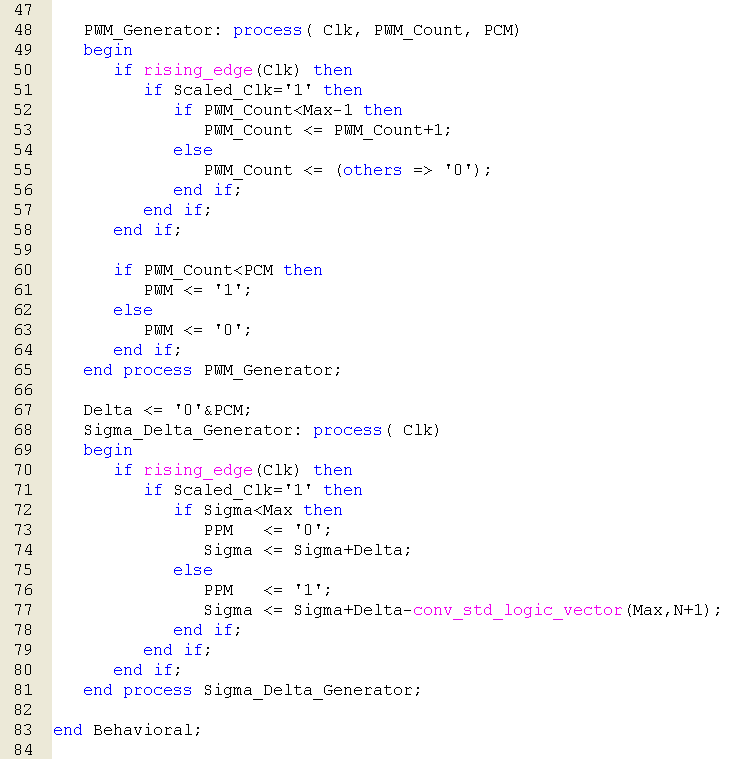 |
| |
|
|
|
|
| |
Simulation with
N=4
and Max=16
|
| |
Please note - The circuit above only a
suggestion which not optimized for size/speed.
It appears that the PPM value first will be 1 after
16 clock-pulses - this fact shouldn't be a problem
in real-life applications, but its possible fix "the
bug" with minor changes (how?)
|
| |
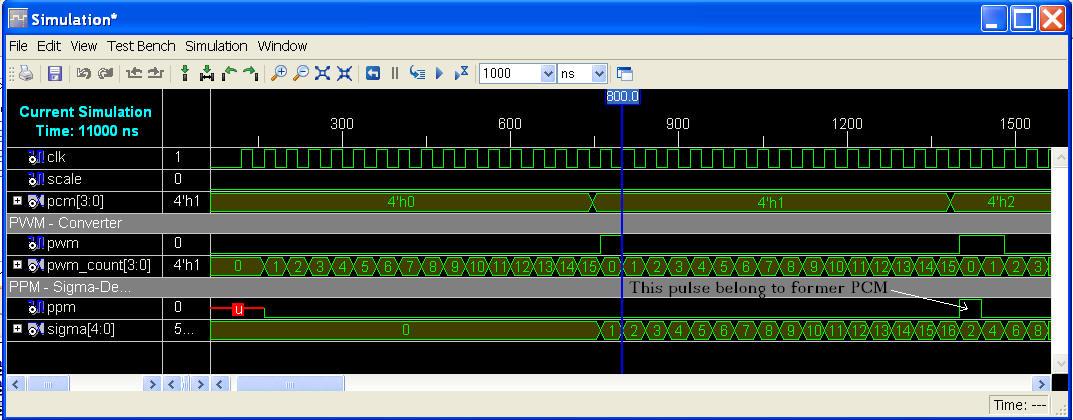 |
| |
|
| |
 |
| |
|
| |
 |
| |
|
| |
 |
| |
|
| |
 |
| |
|
| |
 |
| |
|
| |
 |
| |
|
| |
 |
|
|
|
|
|
|
|
